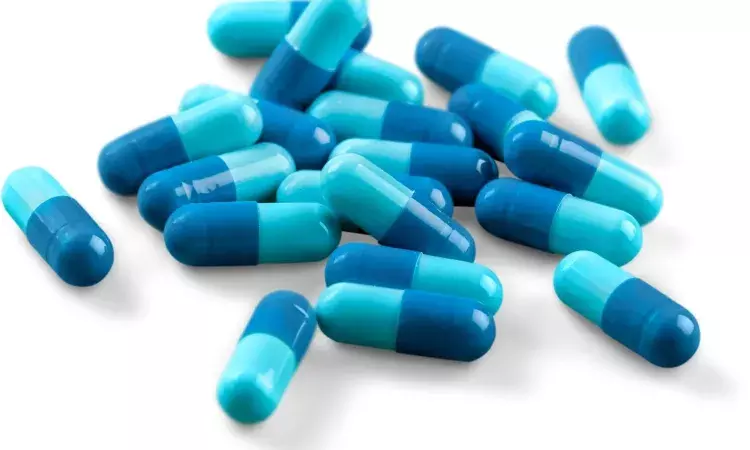- Home
- Medical news & Guidelines
- Anesthesiology
- Cardiology and CTVS
- Critical Care
- Dentistry
- Dermatology
- Diabetes and Endocrinology
- ENT
- Gastroenterology
- Medicine
- Nephrology
- Neurology
- Obstretics-Gynaecology
- Oncology
- Ophthalmology
- Orthopaedics
- Pediatrics-Neonatology
- Psychiatry
- Pulmonology
- Radiology
- Surgery
- Urology
- Laboratory Medicine
- Diet
- Nursing
- Paramedical
- Physiotherapy
- Health news
- Fact Check
- Bone Health Fact Check
- Brain Health Fact Check
- Cancer Related Fact Check
- Child Care Fact Check
- Dental and oral health fact check
- Diabetes and metabolic health fact check
- Diet and Nutrition Fact Check
- Eye and ENT Care Fact Check
- Fitness fact check
- Gut health fact check
- Heart health fact check
- Kidney health fact check
- Medical education fact check
- Men's health fact check
- Respiratory fact check
- Skin and hair care fact check
- Vaccine and Immunization fact check
- Women's health fact check
- AYUSH
- State News
- Andaman and Nicobar Islands
- Andhra Pradesh
- Arunachal Pradesh
- Assam
- Bihar
- Chandigarh
- Chattisgarh
- Dadra and Nagar Haveli
- Daman and Diu
- Delhi
- Goa
- Gujarat
- Haryana
- Himachal Pradesh
- Jammu & Kashmir
- Jharkhand
- Karnataka
- Kerala
- Ladakh
- Lakshadweep
- Madhya Pradesh
- Maharashtra
- Manipur
- Meghalaya
- Mizoram
- Nagaland
- Odisha
- Puducherry
- Punjab
- Rajasthan
- Sikkim
- Tamil Nadu
- Telangana
- Tripura
- Uttar Pradesh
- Uttrakhand
- West Bengal
- Medical Education
- Industry
Pharmaceutical fraud can be prevented by candy-coated pills: Study

Consumers could upload a smartphone photograph of a pill and if its CandyCode matches one in the database, the consumer could be confident that the pill is genuine. If not, it is potentially fraudulent.
California: According to a new study, colourful candy-coated pills could be a simple way to prevent pharmaceutical fraud.
The findings of the research were published in the journal 'Scientific Reports' by bioengineering professor William Grover at the University of California-Riverside.
The technique, which he calls CandyCode and uses tiny multicoloured candy nonpareils or "hundreds and thousands" as a uniquely identifiable coating for pharmaceutical capsules and pills.
Counterfeit or substandard medicines harm millions of people and cost an estimated $200 billion annually. In the developing world, the World Health Organization estimates that one in 10 medical products is fake.
Grover's lab has previously worked on simple, low-cost ways to ensure the authenticity of pharmaceuticals. Other researchers have been interested in putting unique codes on pills that can be used to verify their authenticity, but all of those schemes have practical limitations.
"The inspiration for this came from the little colourful chocolate candies. Each candy has an average of 92 nonpareils attached randomly, and the nonpareils have eight different colours. I started wondering how many different patterns of coloured nonpareils were possible on these candies," said Grover.
"It turns out that the odds of a randomly generated candy pattern ever repeating itself are basically zero, so each of these candies is unique and will never be duplicated by chance.
This gave Grover the idea that the nonpareils could be applied as a coating to each pill, giving it a unique pattern that could be stored by the manufacturer in a database. Consumers could upload a smartphone photograph of a pill and if its CandyCode matches one in the database, the consumer could be confident that the pill is genuine. If not, it is potentially fraudulent.
To test this idea, Grover used edible cake decorating glue to coat Tylenol capsules with nonpareils and developed an algorithm that converts a photo of a CandyCoded pill into a set of text strings suitable for storing in a computer database and querying by consumers.
He used this algorithm to analyze a set of CandyCode photos and found they function as universally unique identifiers, even after subjecting the CandyCoded pills to physical abuse that simulates the wear-and-tear of shipping.
"Using a computer simulation of even larger CandyCode libraries, I found that a company could produce 10^17 CandyCoded pills--enough for 41 million pills for each person on earth--and still be able to uniquely identify each CandyCoded pill," Grover said.
Even more unique CandyCodes could be created with the introduction of more colours or combining different sizes or shapes of candy nonpareils. CandyCodes could also be used to ensure the authenticity of other products that are often counterfeited.
Bottle caps, for example, could be coated with adhesive and dipped in nonpareils to ensure the integrity of perfume or wine and garment or handbag hang tags could be coated with glitter.
CandyCoded capsules or tablets have an unexpected benefit for the consumer as well.
"Anecdotally, I found that CandyCoded caplets were more pleasant to swallow than plain caplets, confirming Mary Poppins' classic observation about the relationship between sugar and medicine," said Grover.
candy coated pillspharma fraudscientific reportsprofessor william groveruniversity of california riversidetylenol capsulescandycode
Source : ANIRuchika Sharma joined Medical Dialogue as an Correspondent for the Business Section in 2019. She covers all the updates in the Pharmaceutical field, Policy, Insurance, Business Healthcare, Medical News, Health News, Pharma News, Healthcare and Investment. She has completed her B.Com from Delhi University and then pursued postgraduation in M.Com. She can be contacted at editorial@medicaldialogues.in Contact no. 011-43720751
Next Story


